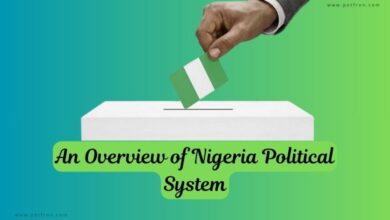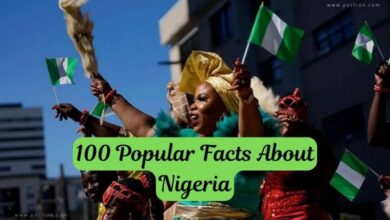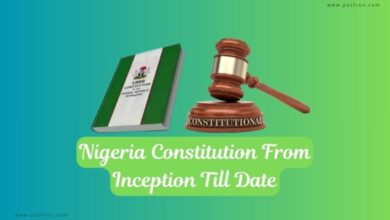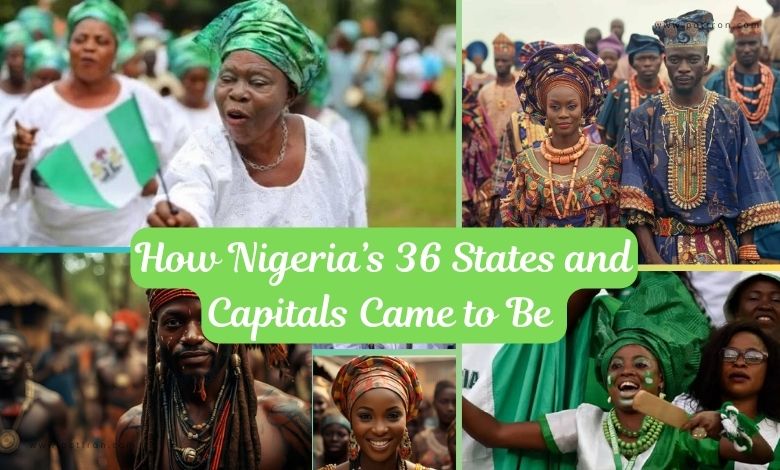
In this article, I explore Nigeria states and capital to help you understand How Nigeria became a 36 States country. I will explore how Nigeria’s 36 states were created, the regions they emerged from, and the political and administrative shifts that defined their current form. The creation of Nigeria’s states and their capitals did not happen overnight, it was a gradual process shaped by politics, ethnicity, culture, and governance challenges.
List of Nigeria 36 States and Capital
Below is a complete list of Nigeria’s 36 states and their capitals. Abuja is the capital of Nigeria and is located within the Federal Capital Territory (FCT).
| State | Capital |
|---|---|
| Abia | Umuahia |
| Adamawa | Yola |
| Akwa Ibom | Uyo |
| Anambra | Awka |
| Bauchi | Bauchi |
| Bayelsa | Yenagoa |
| Benue | Makurdi |
| Borno | Maiduguri |
| Cross River | Calabar |
| Delta | Asaba |
| Ebonyi | Abakaliki |
| Edo | Benin City |
| Ekiti | Ado-Ekiti |
| Enugu | Enugu |
| Gombe | Gombe |
| Imo | Owerri |
| Jigawa | Dutse |
| Kaduna | Kaduna |
| Kano | Kano |
| Katsina | Katsina |
| Kebbi | Birnin Kebbi |
| Kogi | Lokoja |
| Kwara | Ilorin |
| Lagos | Ikeja |
| Nasarawa | Lafia |
| Niger | Minna |
| Ogun | Abeokuta |
| Ondo | Akure |
| Osun | Osogbo |
| Oyo | Ibadan |
| Plateau | Jos |
| Rivers | Port Harcourt |
| Sokoto | Sokoto |
| Taraba | Jalingo |
| Yobe | Damaturu |
| Zamfara | Gusau |
Suggested: An Overview of Nigeria Political System
Related: Nigeria National Anthem and Its Frequently Asked Questions
Historical Overview of How Nigeria 36 States and Capital Came to Be
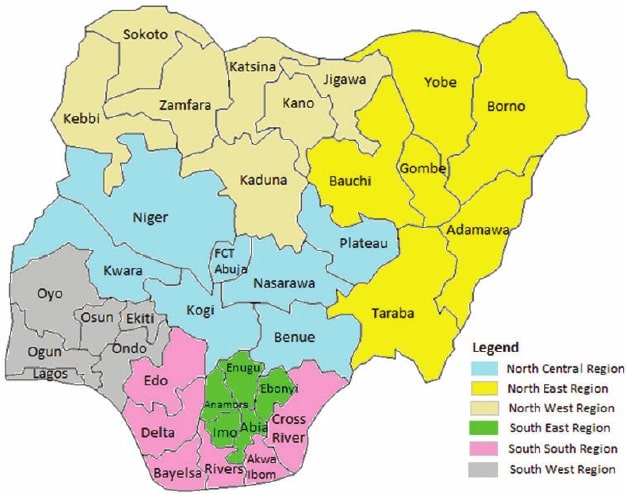
1. The Origins of Nigeria’s States Pre-Independence
Before Nigeria gained independence from Britain in 1960, the country was divided into various regions based on ethnicity, culture, and colonial administrative convenience. The British colonizers governed Nigeria primarily through three major regions:
- The Northern Region
- The Western Region
- The Eastern Region
In addition, a small region known as the Southern Cameroons existed before it voted in a 1961 plebiscite to join Cameroon. These major regions corresponded to the geopolitical and ethnic blocs of the Hausa-Fulani in the North, the Yoruba in the West, and the Igbo in the East.
2. Independence and the Regional Structure (1960)
When Nigeria attained independence on October 1, 1960, it maintained its regional structure. The country was governed under a federal system with each region having substantial autonomy. The country’s political architecture rested on these three regions:
- The Northern Region: Predominantly populated by the Hausa-Fulani and with a vast landmass, it became a powerful bloc.
- The Western Region: Dominated by the Yoruba, this region was renowned for its early development in education and infrastructure.
- The Eastern Region: Home to the Igbo, the Eastern Region was known for its enterprise and push for development.
Related: List of Nigeria Past Presidents
3. First Major State Creation: The Mid-Western Region (1963)
The first significant administrative change came just three years after independence. In 1963, the federal government created the Mid-Western Region out of the Western Region. This was Nigeria’s first attempt at creating a new region based on ethnic and administrative considerations, as the people of the Mid-Western Region, particularly the Edo and Delta groups, wanted greater autonomy from the Yoruba-dominated Western Region.
Capital: Benin City
Date of Creation: August 9, 1963
Created by: Nigerian government under Prime Minister Abubakar Tafawa Balewa
Reason: To accommodate the unique cultural identity of the Edo and Delta people.
This new region became Nigeria’s fourth region and set a precedent for future state creations.
4. The Military Era and First Wave of State Creation (1967)
Following the first military coup in January 1966 and the subsequent counter-coup in July 1966, Nigeria found itself in a state of political instability. Ethnic tensions reached a boiling point, especially between the Igbo-dominated East and other regions. The outbreak of the Nigerian Civil War (1967-1970) was partly triggered by these regional tensions.
To address the political fragility and weaken regional powers, General Yakubu Gowon, who became the Head of State in 1966, implemented a significant administrative reform in 1967. He abolished the existing four regions and replaced them with 12 states.
The 12 States Created by General Yakubu Gowon (May 27, 1967):
- Lagos State (Capital: Ikeja)
- Western State (Capital: Ibadan)
- Mid-Western State (Capital: Benin City)
- East-Central State (Capital: Enugu)
- Rivers State (Capital: Port Harcourt)
- South-Eastern State (Capital: Calabar)
- North-Western State (Capital: Sokoto)
- North-Central State (Capital: Kaduna)
- North-Eastern State (Capital: Maiduguri)
- Kano State (Capital: Kano)
- Benue-Plateau State (Capital: Jos)
- Kwara State (Capital: Ilorin)
This was Nigeria’s first comprehensive state-creation exercise aimed at decentralizing power, weakening the influence of major ethnic groups, and balancing the regional tensions that led to the civil war. It also marked the beginning of Nigeria’s evolution from a region-based federation to a state-based federation.
Related: Nigeria Coat of Arms And its Full Meaning
Also read: Nigeria Postal Codes and Zip Codes Complete list
5. Post-Civil War and Second Wave of State Creation (1976)
After the civil war ended in 1970, Nigeria underwent more reforms aimed at national reconciliation, unity, and development. In 1976, under the leadership of General Murtala Mohammed, the government created seven new states, bringing the total to 19 states.
The New States Created on February 3, 1976:
- Bauchi State (Capital: Bauchi)
- Benue State (Capital: Makurdi)
- Borno State (Capital: Maiduguri)
- Cross River State (Capital: Calabar)
- Gongola State (Capital: Yola)
- Imo State (Capital: Owerri)
- Niger State (Capital: Minna)
- Ogun State (Capital: Abeokuta)
- Ondo State (Capital: Akure)
- Oyo State (Capital: Ibadan)
- Plateau State (Capital: Jos)
- Sokoto State (Capital: Sokoto)
The aim of this exercise was to promote national integration and equal representation for minority groups. The regional structure was now firmly replaced by a more detailed state-based system. Importantly, the creation of new states also helped to enhance economic development by bringing government closer to the people.
6. Abuja and the Move to a Federal Capital (1976)
Another important decision made in 1976 was the plan to move Nigeria’s federal capital from Lagos to a more central location in the country. The government under General Murtala Mohammed decided that Lagos was too congested and geographically isolated, which made it unsuitable as the federal capital.
Thus, Abuja was designated as the new federal capital territory (FCT), chosen for its central location, ease of access from all regions, and its neutrality as a non-ethnic city. The move to Abuja officially began in the early 1980s, with the capital formally relocating in 1991 under the regime of General Ibrahim Babangida.
7. Third Wave of State Creation (1987)
In 1987, the military government of General Ibrahim Babangida created two more states, bringing the total to 21 states. The move aimed to further decentralize power and accommodate the increasing demands for statehood by various ethnic and political groups.
The New States Created on September 23, 1987:
- Akwa Ibom State (Capital: Uyo)
- Katsina State (Capital: Katsina)
The creation of Akwa Ibom State, carved out from Cross River State, was particularly important because it addressed the long-standing agitations of the Ibibio and Annang ethnic groups, who felt marginalized within Cross River State.
8. Fourth Wave of State Creation (1991)
By the early 1990s, the demand for the creation of more states became even more pronounced as groups across Nigeria sought greater autonomy and representation. In 1991, General Ibrahim Babangida created nine new states, bringing the total to 30 states.
The New States Created on August 27, 1991:
- Abia State (Capital: Umuahia)
- Enugu State (Capital: Enugu)
- Delta State (Capital: Asaba)
- Jigawa State (Capital: Dutse)
- Kebbi State (Capital: Birnin Kebbi)
- Kogi State (Capital: Lokoja)
- Osun State (Capital: Osogbo)
- Taraba State (Capital: Jalingo)
- Yobe State (Capital: Damaturu)
This wave of state creation brought important changes, particularly in the South-East and South-South regions, with Abia, Delta, and Enugu states carving out new political and administrative territories. In the North, Jigawa, Yobe, and Kebbi states provided more balanced representation for minority groups within the larger Kano, Borno, and Sokoto states, respectively.
9. Final Wave of State Creation (1996)
The final round of state creation in Nigeria took place in 1996 under the military regime of General Sani Abacha. Abacha’s regime created six new states, bringing the total to 36 states.
The New States Created on October 1, 1996:
- Bayelsa State (Capital: Yenagoa)
- Ebonyi State (Capital: Abakaliki)
- Ekiti State (Capital: Ado-Ekiti)
- Gombe State (Capital: Gombe)
- Nasarawa State (Capital: Lafia)
- Zamfara State (Capital: Gusau)
This final wave aimed to further balance Nigeria’s state structure, giving more ethnic groups a sense of representation within the federation. Bayelsa, for example, was carved out to represent the Ijaw ethnic group, while Ebonyi addressed the political and economic concerns of minority groups within the Igbo-speaking regions. Zamfara and Gombe were also created to enhance administrative efficiency and ethnic representation in the North.
10. Nigeria’s State Evolution
The creation of Nigeria states and capital was a gradual and politically charged process influenced by the need to balance ethnic, cultural, and economic interests. From the early post-independence period to the final state creation in 1996, the country evolved from four major regions to a complex federation of 36 states and one federal capital territory. Each wave of state creation was driven by the desire for more representation, national unity, and economic development.
Today, Nigeria’s 36 states and the federal capital reflect the country’s rich diversity and complex political history. While state creation helped to bring governance closer to the people, it also raised new challenges in terms of resource distribution, ethnic rivalries, and the administration of a large and populous country. Nonetheless, the structure of 36 states has become an essential part of Nigeria’s political and cultural identity, while providing a framework for the country’s governance and development.
Timeline of State Creation in Nigeria
- 1963: Mid-Western Region (Benin City)
- 1967: 12 States created under Yakubu Gowon
- 1976: 7 States created under Murtala Mohammed
- 1987: 2 States created under Ibrahim Babangida
- 1991: 9 States created under Ibrahim Babangida
- 1996: 6 States created under Sani Abacha

